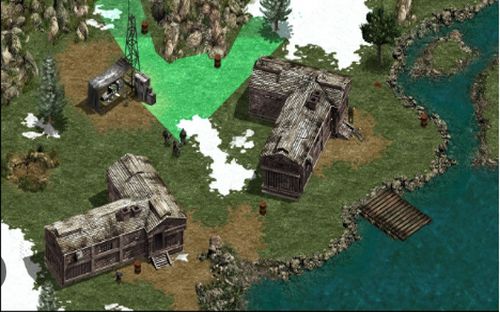Pyro Studios created the real-time tactics game Commandos: Behind Enemy Lines, which was published in 1998. Players are immersed in clandestine operations conducted by a group of elite Allied commandos working behind Nazi lines during World War II. Commandos places more of an emphasis on small-unit tactics, stealth, and meticulous preparation than classic strategy games, which are more concerned with large-scale combat. In order to carry out missions involving espionage, targeted attacks, and sabotage, players must manage a small group of experts, each with specialized abilities.
Instead than using raw force, the gameplay is based on puzzle-like obstacles and tactical depth. Every mission has a well planned area that is teeming with guard stations, patrol routes, sentries, and attackers. The key to success is seeing trends, taking advantage of blind spots, and using your team’s special talents. For example, the Spy may disguise himself as an opponent to sneak inside bases without being seen, while the Green Beret can scale some surfaces and kill adversaries in silence. Understanding each character’s strengths and weaknesses, as well as timing and patience, are essential.

Directly overwhelming your enemies with more troops or weapons is not an option. Errors frequently result in quick failure, and alarms might draw reinforcements. Every action must be considered in this high-stakes environment. Reloading and saving often establishes a pattern, particularly when attempting to eliminate a guard patrol or perfect an incursion without setting off a full alert. The basis of the game’s attraction is the stress and fulfillment that come from carrying out a flawless strategy.
The game’s visuals, which are hand-painted and employ a fixed isometric viewpoint, depict the diverse landscapes of North Africa and Europe during the war. The graphic design, which includes clear lines of sight, opponent locations, and environmental threats, complements the strategic gameplay in a variety of settings, including snow-covered strongholds, desert outposts, and well fortified coastal sites. Despite the stylized appearance of the game, each map’s attention to detail heightens the feeling of realism and immersion.
Another important aspect of the experience is the sound design. Each commando has a unique and distinctive voice line that adds to their personality and helps them feel more like people than just troops. The soundtrack created by the ambient sounds, opponent conversation, and alarms enhances the stealth gameplay. When utilized judiciously, music cues frequently increase tension at pivotal points or indicate that something has gone awry.
For its time, the game’s UI is practical and easy to use. Players may use the UI or hotkeys to swap between the different characters, each of which is controlled independently. Although they are simple to use, commands like crawling, grenade throwing, knife use, and distraction deployment need to be timed precisely for optimal impact. Because of the game’s complexity, which may be severe but never seems unfair once players grasp the principles, this degree of control is required.



In the late 1990s, Commandos: Behind Enemy Lines was notable for its depth and uniqueness. This game established a distinct niche with its slow, deliberate tempo and emphasis on meticulous execution, in contrast to the majority of war-themed games that tended toward action or more general strategy. Later games in the real-time tactics genre would be influenced by its design philosophy, leading to spiritual heirs and sequels such as Desperados and Shadow Tactics. Its position in gaming history was further cemented by the numerous expansions and sequels that resulted from its success.
System Requirements OF Commandos Behind Enemy Lines Highly Compressed PC
| Ram | 32 MB RAM |
|---|---|
| Processor | Pentium 166 MHz |
| Accessories | Keyboard, mouse, and speaker |
| Graphics card | NVIDIA GeForce 2 MX |
| Windows | Xp, 7, 8, 8.1, 10, and 11 |
| Free disk space | 290 MB |
Especially for gamers who are not familiar with the genre, the learning curve may be rather severe. Attempts at missions are frequently necessary, and experimenting is encouraged. However, the thrill of eventual achievement makes this trial-and-error process rarely feel unpleasant. The payoff is enormous when a well-thought-out strategy comes together and the team successfully eludes detection. Players are encouraged to think like tacticians, assess the battlefield, and make use of every tool available to them because they are not being hand-held.
Because missions may frequently be addressed in a variety of ways, replay value is considerable. Although some individuals are necessary for particular missions, other solutions can be found by making inventive use of the surroundings and adversary AI. Experienced players frequently find non-lethal methods, speedrun strategies, or surprising sequences to accomplish goals. This adaptability gives the game more complexity and duration and promotes mastery over completion.
In retrospect, Commandos: Behind Enemy Lines is a seminal work that established a genre and demonstrated that strategy games may succeed with a small-scale, laser-like focus. Modern titles that prioritize accuracy and stealth over spectacle still bear its impact. Its outdated visuals and challenging controls could turn off novice players, but its essential gameplay is still engaging and rewarding for those who are prepared to carefully plan, watch, and attack.


